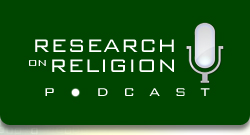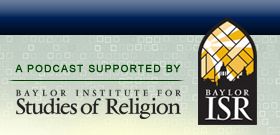

|
Anthony Esolen on Timeless Hymns  Date: January 14th, 2018
 St. Augustine once said, “He who sings, prays twice.” Music has been a powerful component of Christian worship for its entire existence, and Prof. Anthony Esolen, a faculty fellow at Thomas More College of Liberal Arts, joins us to discuss the nature and importance of the truly timeless hymns. We begin as we usually do with a chat about our guest’s personal background. Dr. Esolen enlightens us about Thomas More College (in Merrimack, New Hampshire), a new program he is setting up, and why he decided to translate a work of literature that had already been translated (Dante’s Inferno). Following that brief discussion, we dive into the world of religious music and start off with a wonderful thought by St. Augustine who said, “He who sings, prays twice.” Prof. Esolen explains the importance of music in worship and observes that the first element to go in a church on the verge of decline is the music. We then discuss “timeless hymns” and Tony (Esolen) lays out a list of characteristics that make such music so enduring including the fact that they are passed down over generations, but also other aspects such as logical progressions from stanza to stanza, proper word choice and imagery, and the meter of the song. Esolen notes how much of contemporary Christian music is too maudlin, prompting Tony (Gill) to make an odd reference to Seals & Croft from the 1970s. Our conversation also covers why some periods in history tended to create a great flourishing of hymns, and Dr. Esolen makes an argument that we are in the doldrums now (and have been for the past century) as our culture has lost its connection to poetry. Noting the importance of poetry throughout all cultures and eras, he explains this loss as the result of academics making poetry too esoteric and cut off from common people (who have used poetry to tell stories throughout the ages). He also warns of the dangers of making poetry to overtly political. Later in the interview, we also discuss why Protestants did so well in crafting timeless hymns in the 18th and 19th centuries, noting that they had a mission to take the Scriptures to the average person in the pews. He sings the praises of folks such as the Wesleys and Robert Bridges. The second half of our discussion walks through a series of themes that are found in hymns, starting with their origins in the Psalms. Prof. Esolen points out that Jesus prayed the Psalms and that music was important from the earliest stages of Christianity, as noted by St. Paul. We also discuss the difficulty in translating Hebrew, which is a much more “concentrated” language, into English in a way that preserved the meter, meaning, and poetry of the original verses written in the Old Testament. It is at this point where we feature a clip from the CD included with Real Music, Prof. Esolen’s book. The first one is “The King of Love My Shepherd Is,” written by Henry Baker (1868) and performed by the St. Cecilia Choir at St. John Cantius Church in Chicago, Illinois. (All music clips are from the same choir.) Another important theme within the great hymns examines the divine nature of Jesus. Here we listen to and discuss “Let All Mortal Flesh Keep Silence,” by Gerard Moultrie (1864). Other themes include the importance of the Nativity, which although we frequently attribute to a time of great merriment in our Christmas carols, was a time of great tribulations for people in Judea. Dr. Esolen helps us understand the critical difference between “joy” and “pleasure,” noting that joy and sorrow are two emotions that are often linked together as they were at the birth of Jesus. The hymn illustrating the Nativity is “Of the Father’s Love Begotten” (John Mason Neale’s 1854 translation of a 4th century hymn). We also discuss the music teaching us of the Crucifixion and Resurrection (with “Ah, Holy Jesus,” by Robert Bridges) and “the Church militant,” a set of songs that encourage congregants to take their faith forward into the world. Here Dr. Esolen explains how our culture has done itself a disservice recently by downplaying the martial energy of young men that could be brought to bear for the promotion of Christianity. He notes that “battle themes” are common in the Bible and religious music over time. We listen to Charles Wesley’s “Soldiers of Christ, Arise” and Tony (Esolen) points out the powerful nature of such music. We finish our discussion by asking our guest what he would tell a young Tony Esolen some 30 or 40 years ago at the outset of his career. Tony, the RoR host, presses Tony, the guest, to talk about some of the things he has learned over the decades and Prof. Esolen cautions us on the decay of culture over this period and how we must trust the Word of God. Recorded: December 29, 2017. (Note: Copyright permission for music clips provided by TAN Books and Fr. Scott Haynes of St. Cecilia Choir. Documents on file with host.) RELATED LINKS Prof. Anthony Esolen’s bio at Thomas More College of Liberal Arts. Real Music: A Guide to the Timeless Hymns of the Church, by Anthony Esolen. Ironies of Faith: The Laughter at the Heart of Christian Literature, by Anthony Esolen. Out of the Ashes: Rebuilding America’s Culture, by Anthony Esolen. Ten Ways to Destroy the Imagination of Your Child, by Anthony Esolen. Angels, Barbarians, and Nincompoops and a Lot of Other Words You Thought You Knew, by Anthony Esolen. Anthony Esolen’s Amazon page (with other books and translations). Touchstone (magazine where Anthony Esolen is a Senior Editor). St. John Cantius Church (Chicago), home of the St. Cecilia Choir. RELATED PODCASTS Robert Coote on the 27 Most Popular Hymns and Amazing Grace. Mark Lawson-Jones on Christmas Carols. Ryan Habig on Music Ministry and “With Us” (an original song). Jim Houser on the Christian Music Industry.
Leave a Reply |
 Search The Podcast
To search the podcast, type a term and click the Search button.
  Browse Podcast Categories
Select a category below to browse the podcast:
   |














